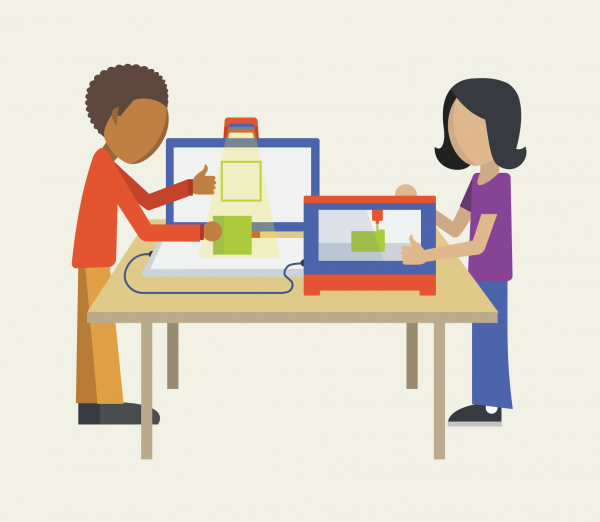
The larger and more complex your designs become, the more difficult it will be to print with just one piece. For example, what if you wanted to build something bigger than the printer itself? With joints and plugs, you can interconnect pieces to build objects to the limits of your imagination.
In this lesson we will learn how to make small interconnected pieces to build a toy. In the end, you will not only have a cool toy, but also the ability to build objects of any size.
Practice: As an introduction to the 3D printing process and the TinkerCAD program, complete the “project Custom Cookie Cutter ” ( cookie cutter Custom ).
Practice: Follow these tutorials on “Project Ignite” to learn about the process of making 3D models with various parts. Tutorials include building a toy car and spinning top to prepare you to build more complex models with several connected parts.
Practice: Try this “Project Ignite” tutorial on using ball joints. Implementing ball joints will allow you to make mobile joints that will give life to your projects.
Practice: You are going to design your toy for a specific user. Complete the “Project Five Chairs ” ( Five Chairs ) to practice centered design humans.
Build a toy! Since you have experience with interconnected parts, build your own toy using rigid joints, loose joints, and ball joints.
** NOTE: If you want a cylinder to be rotatable in a hole (loose joint), make sure the diameter of the hole is 0.5mm more than the diameter of the cylinder. If you want the cylinder to stick into the hole (rigid joint), use a hole 0.3mm larger than the cylinder. **
Produced by Digital Promise Global with the help of the Open Educational Resources used in this guide. Distributed to Learning Studios schools as part of HP, Inc. and Microsoft’s Reinvent the Classroom. A special thanks to Donovan Snyder for the Spanish translation.
This work is licensed under a Creative Commons Attribution-ShareAlike 4.0 International License . You can share this project or modified versions of it under this same license.

We want to hear from you!
Please take this 5-minute survey and help us serve you better.
